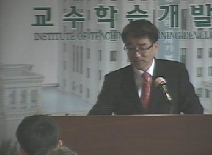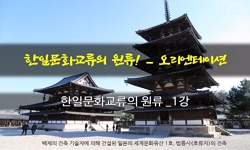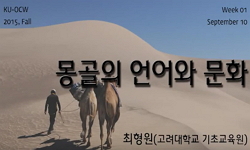The ancient cultures of the countries bordering on Western China were influenced by exchange with their neighboring countries in one or some form and developed. It was the very Silk Road that laid the stage for this exchange. The cultural exchange of ...
http://chineseinput.net/에서 pinyin(병음)방식으로 중국어를 변환할 수 있습니다.
변환된 중국어를 복사하여 사용하시면 됩니다.
- 中文 을 입력하시려면 zhongwen을 입력하시고 space를누르시면됩니다.
- 北京 을 입력하시려면 beijing을 입력하시고 space를 누르시면 됩니다.
부가정보
다국어 초록 (Multilingual Abstract)
The ancient cultures of the countries bordering on Western China were influenced by exchange with their neighboring countries in one or some form and developed. It was the very Silk Road that laid the stage for this exchange. The cultural exchange of the Tarim Basin(Xīnjiāng at present) located in the middle region of the Silk Road was vibrant in the Han and Tang dynasties. As the maritime Silk Road began to develop, the oasis(overland)Silk Road began to vanish and accordingly the ancient civilization of the countries bordering on Western China gradually came to disappear into the sand desert. The vestiges of this exchange can be found in pictures or in records. The figures or objects found on the mural painting or excavated remains provide a clue for us to figure out the living cultures of that times. Therefore, they can be said to be the valuable material in the field of the academic research related to the ancient history. The mural paintings in the Kizil stone cave contain Buddhist contents and depict music as the expression of religious faith. For this reason, there are musical instruments seen in the ancient mural paintings and those transformed into several forms in the music of the present Xīnjiāng region converted into Islam. This could be felt in the field study. It is not easy to define their origins though the external appearance of the musical instrument found in the mural painting may be like or unlike the present one. This study attempted to identify the aspect of cultural exchange in Xīnjiāng on the ancient Silk Road based on the outcome of studies conducted by several scholars and this field study in relation to the mural paintings of the Kizil stone cave. This would become the basic work to identify the aspect of exchange in the Korean history of music located on the ancient Silk Road.
목차 (Table of Contents)
- I. 머리말
- II. 고대 서역 구자악의 문헌사료 검토
- III. 키질석굴에 나타난 원형울림통을 가진 현악기의 고증
- IV. 맺음말
- 참고문헌
- I. 머리말
- II. 고대 서역 구자악의 문헌사료 검토
- III. 키질석굴에 나타난 원형울림통을 가진 현악기의 고증
- IV. 맺음말
- 참고문헌
- 논문초록
동일학술지(권/호) 다른 논문
-
- 동북아시아문화학회
- 채영희
- 2010
- KCI등재
-
- 동북아시아문화학회
- 김은희
- 2010
- KCI등재
-
하기와라 사쿠타로(萩原朔太郎) 와 靑馬유치환 시 비교연구
- 동북아시아문화학회
- 김미자
- 2010
- KCI등재
-
- 동북아시아문화학회
- 박현규
- 2010
- KCI등재





 KCI
KCI DBpia
DBpia




